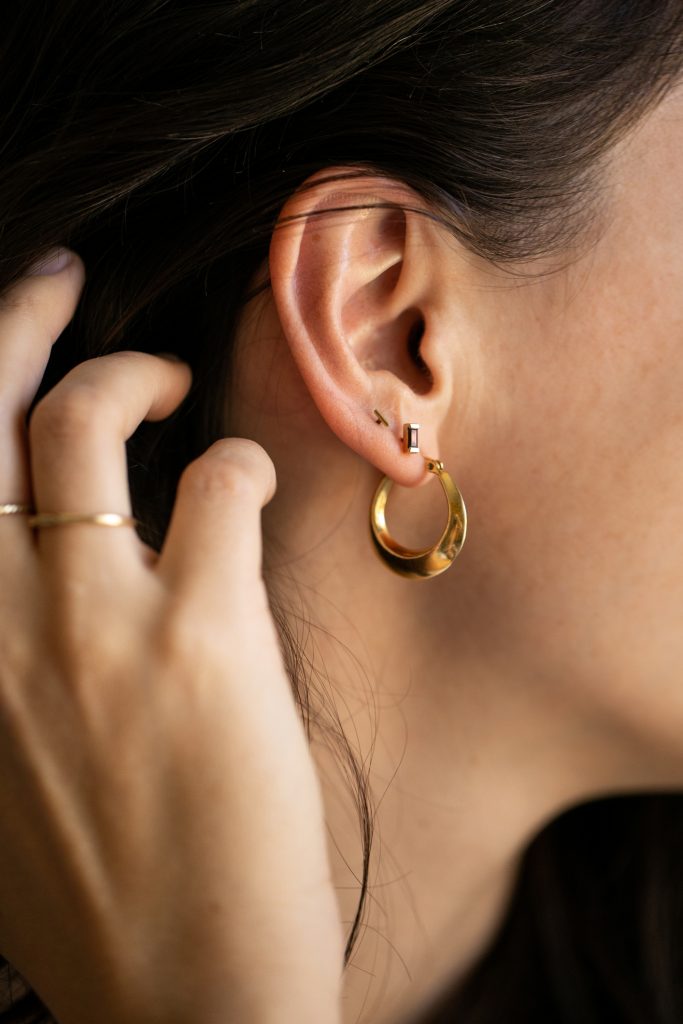
Piercing jewelry has come a long way from simple studs and hoops to more sophisticated designs made with innovative materials. As the piercing industry evolves, it’s embracing advancements that prioritize safety, comfort, and aesthetics. The future of medical piercing jewelry is particularly exciting, with trends focusing on biocompatible materials, advanced technology, and sustainable practices that enhance both style and functionality.
One of the most exciting trends is the use of innovative materials in medical piercing jewelry. Traditional materials, like gold and surgical stainless steel, have been staples for years. However, advancements are now introducing new hypoallergenic and biocompatible options that prioritize safety without sacrificing aesthetics.

Medical-Grade Titanium
Titanium remains a top choice for its lightweight nature, strength, and hypoallergenic properties. As demand grows, manufacturers are designing more intricate and stylish titanium jewelry.
Medical-Grade Plastic
This material is gaining traction for its hypoallergenic qualities and suitability for people prone to allergies. It’s particularly beneficial for children and individuals with sensitive skin.
Niobium and Zirconium
These materials are emerging as alternatives to titanium, offering similar hypoallergenic and corrosion-resistant properties.
Eco-Friendly Alternatives
Sustainability is becoming a key focus, with brands exploring biodegradable or recycled materials for environmentally conscious consumers.
The future of medical piercing is being shaped by innovations in technology. Piercing procedures and jewelry design are benefiting from advancements that make the process more precise, hygienic, and comfortable.
Digital mapping technology is revolutionizing the way piercings are placed. By ensuring accurate placement, it minimizes risks of asymmetry or complications. Additionally, sterile cartridge systems and single-use needles are setting new standards for hygiene and safety.
Jewelry manufacturing is also seeing a shift with the rise of 3D printing. This technology allows for the creation of highly customizable designs tailored to individual anatomy, ensuring better comfort and healing. Looking ahead, smart jewelry—embedded with sensors to monitor healing or detect signs of infection—could soon become a reality.
Fake jewelry may seem appealing due to its low cost and variety, but it carries significant risks that can affect your health and well-being. Common issues include tarnishing and discoloration, which can make the jewelry look unattractive over time. It may also cause skin irritation or allergic reactions, leading to discomfort and potential complications. Prolonged or failed healing is another risk, as low-quality materials can interfere with the body’s ability to heal properly. In some cases, breakage can occur, leaving parts of the jewelry embedded in the skin.
Investing in quality jewelry is a worthwhile expense to avoid these issues and ensure a safe, comfortable experience.
Comfort and healing are becoming key considerations in jewelry design. The focus is no longer just on aesthetics but also on how jewelry can support the healing process and reduce discomfort.
Modern designs now feature flat-back earrings that reduce pressure on the piercing site and longer posts that accommodate swelling during the initial stages of healing. Open designs that allow better airflow around the piercing are also becoming more common, as they help reduce the risk of infection.
Customization is another growing trend, with jewelry tailored to fit individual anatomy. This ensures not only a better fit but also less irritation and quicker healing times. By prioritizing functionality alongside style, these designs are reshaping how we think about piercing jewelry.

Allergies and sensitivities to jewelry materials can make piercings uncomfortable or even dangerous. The future of hypoallergenic and biocompatible piercing jewelry is focusing on eliminating these risks altogether.
These innovations ensure that everyone, even those with sensitive skin or pre-existing allergies, can enjoy safe and stylish piercings.
Sustainability is becoming a priority across industries, and piercing jewelry is no exception. Consumers are increasingly seeking products that align with their values, and brands are responding with eco-friendly practices.
The Role of Recycled and Ethically Sourced Materials
Recycled metals are being used to create high-quality jewelry with minimal environmental impact. Ethical sourcing of materials, such as gemstones and precious metals, is also gaining traction as consumers demand transparency and sustainability in production. Companies are also adopting minimal packaging designs to reduce waste.

While safety and functionality are critical in medical piercing jewelry, style remains an essential factor. The future of piercing jewelry is a fusion of form and function, offering pieces that are both practical and visually appealing.
From bold, statement designs to minimalist pieces, jewelry is becoming more versatile to suit different tastes and lifestyles. Interchangeable components are also gaining popularity, allowing wearers to customize their look while maintaining comfort and safety.
The future of medical piercing jewelry is defined by innovation, comfort, and sustainability. Advancements in materials, technology, and design are creating safer and more stylish options for people of all ages. Whether you’re looking for hypoallergenic solutions, sustainable choices, or cutting-edge designs, these trends offer something for everyone.
At Medical Piercing, we combine safety, style, and comfort in every piercing procedure. Our clinics in Ontario and Calgary use skin-friendly, medical-grade materials to ensure the best possible experience for our patients. Book your appointment today and discover the future of medical piercing firsthand.